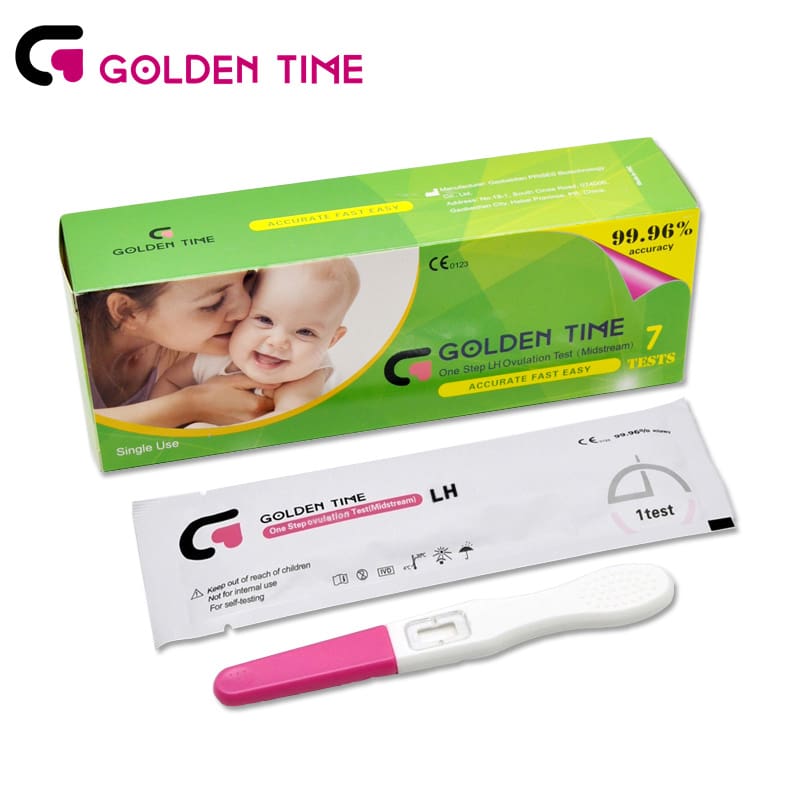Aug . 13, 2024 23:36 Back to list
Optimal Timing for Ovulation Predictor Kit Testing from Leading Manufacturers for Best Results
The Best Time to Use OPK Tests Insights from Leading Manufacturers
When it comes to trying to conceive, understanding one's fertility cycle is crucial. Ovulation Predictor Kits (OPK) have emerged as essential tools for individuals or couples looking to optimize their chances of conception. However, the effectiveness of these tests largely depends on when they are used. This article will delve into the best times to use OPK tests according to insights from leading manufacturers in the field.
Understanding OPK Tests
OPK tests work by detecting the surge in Luteinizing Hormone (LH) that occurs just before ovulation. Typically, a surge in LH can be indicative of impending ovulation within 12 to 36 hours, making timely use of the OPK critical. Most manufacturers recommend starting the testing process a few days before a predicted ovulation date based on individual cycle lengths.
Determining Your Cycle Length
To determine when to start using OPK tests, knowing your menstrual cycle length is vital. A typical cycle lasts anywhere from 21 to 35 days. Leading manufacturers suggest counting the days from the first day of your last period to the day before your next one. Here’s a general guideline
- For a 28-day cycle Start testing on Cycle Day 11. - For a 30-day cycle Start testing on Cycle Day 12. - For a 32-day cycle Start testing on Cycle Day 14.
Given these benchmarks, individuals can refine when to start using their OPKs based on their unique cycle patterns, maximizing the chances of catching the LH surge.
best best time to opk test manufacturers

Peak Testing Window
As manufacturers highlight, timing is everything when it comes to OPK tests. Generally, testing should be done at the same time each day to ensure consistent results. Many leading brands suggest testing in the afternoon, as LH levels tend to rise during this time, making afternoon testing more reliable than morning tests.
Using a test strip, individuals should hold the strip in their urine stream for a few seconds, then wait the recommended time (usually five minutes) to read results. If two lines appear, with the test line being as dark or darker than the control line, it indicates a positive result, meaning ovulation is likely to occur soon.
Importance of Consistency
For accurate results, manufacturers advise using OPK tests consistently over several cycles. This repeated use allows individuals to better understand their cycles and pinpoint their ovulation patterns. Some may also consider tracking additional fertility signs, such as basal body temperature and cervical mucus changes, to enhance accuracy.
Conclusion
In conclusion, using OPK tests effectively can significantly increase the chances of conception. The key lies in starting tests at the right time in the menstrual cycle, maintaining consistency in testing, and understanding one's unique body signals. By following the guidelines provided by leading OPK manufacturers, individuals can take informed and proactive steps toward achieving their family planning goals. With the right approach and timing, OPK tests can serve as powerful allies in the journey toward parenthood.
-
Dengue NS1 Rapid Diagnostic Test Kit
NewsMar.07,2025
-
Dengue NS1 Rapid Diagnostic Test Kit
NewsMar.07,2025
-
Dengue NS1 Rapid Diagnostic Test Kit
NewsMar.07,2025
-
Transferrin Rapid Test Cassette Tumor Marker TF Card
NewsMar.07,2025
-
Malaria Pf Pan Rapid Diagnostic Test Kit
NewsMar.07,2025
-
malaria pf / pan ag rapid test
NewsMar.07,2025

